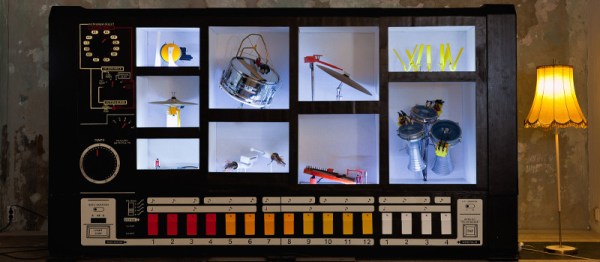Every generation has an instrument which defines its sound, and for those whose formative musical years lie in the 1980s, a very strong contender to the crown is the Roland TR-808 percussion synthesizer. Its sounds can be recognized across a slew of hits from that era and every decade since, and though the original instrument wasn’t a commercial success it remains accessible through sample packs, emulations, and clones. The 808 was an all-analogue device that didn’t use samples, thus [Mark Longstaff-Tyrrell] has been able to reproduce its distinctive cowbell sound with reference to some of the original circuitry.
It shouldn’t come as too much of a surprise to find that the circuit is refreshingly simple. The trigger pulse is converted into an envelope which controls a pair of oscillators. The mixed output passes through a bandpass filter to create the distinctive sound on the output which you can hear in the video below the break. The circuit is recreated on a breadboard with the only concession to modernity being a microcontroller taking the place of the Schmitt trigger oscillators in the original.
Altogether it provides a fascinating insight into the synthesis behind a classic sound, and gives us an increased appreciation for the design skills of those Roland engineers who created it. We’ve looked at the 808 before a few times, including an explanation of the famous faulty transistors which contributed to its sound.














